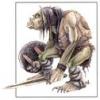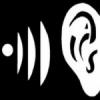Search the Community
Showing results for tags 'sections'.
-
Here is the link to some guidelines that i think will benefit both participants and hosts when submitting or selecting a suggestion I admitidly haven't followed all of them but I think it doesn't do much harm setting up something that can help us in the future. https://docs.google.com/document/d/1VAL-Fip8W2-het4ppsgpa3BH3dNfCY5U9R-c-NTNcFw/edit?usp=sharing Posting it via link so it will be easier to modify if any issues Will help experience of the week And might make random functions a bit more pleasant/ less time for hosts to test multiple songs? if i missed anything or if anyone is in disagreement please let me know
- 3 replies
-
- 3
-

-
- sustains
- handshapes
-
(and 7 more)
Tagged with:
-
I realize that this has been posted before in video form ( http://customsforge.com/topic/841-how-to-make-cdlc-full-in-depth-tut-completed/ ), but seeing as people still ask about it, and there are still CDLCs showing up without sections or very few sections, I thought It'd be a good idea to make a quick, easy tutorial (no video!) on how to add sections to your arrangements. Here goes: Sections are what separates your full arrangements into, well, sections e.g. Chorus, Verse, Bridge, which are selectable in RR (Riff Repeater). So, how do we go about making them? 1) Load up your eof file 2) Select the BEAT MARKER where you want the section to BEGIN. Do this by clicking on the beat marker (the arrow): http://thumbnails112.imagebam.com/34538/2edcca345370955.jpg 3) Press Shift + S 4) Select one from the list of names. Enable "Also add as RS phrase". Note: The DDC might make its own phrases. I still have "Also add as RS phrase" enabled and ddc works without a hitch. 5) If you want the section start to be just for your current arrangement, enable "Specific to <Part x>" http://thumbnails111.imagebam.com/34538/a17db1345371221.jpg 6) Press Ok 7) Repeat for every beat marker where you want a section to BEGIN. 8) ??? 9) Profit! Now, some notes: 1) Use the "noguitar" section name (second to last one in the list) if you have a long part without any notes being played. This allows you to skip this section in RS2014. 2a) Always start a section on a beat that has a note on it. If your section starts on a beat marker that has no note at the same time, the section will not be selectable in RS2014. So, do NOT do this: http://thumbnails111.imagebam.com/34538/ea8f0c345371670.jpg 2b) In the rare case that your notes will start before or after a beat marker, cheat. Only do this AFTER you've synced up everything (in every arrangement) and AFTER you've confirmed that the section is not selectable if you put in on the beat marker before a note, like so: http://thumbnails111.imagebam.com/34538/56834a345371859.jpg If the section is not selectable in RR, just do the following: Make sure you do not have "Auto adjust notes" enabled Anchor the previous beat marker (select it and press "a") Drag the beat marker over the note Set the BPM back to what it was, and do NOT enable "Adjust Notes" Done! 3) There is nothing to "end" a specific section, besides the "noguitar" section. Sections end where the new section starts. Plan accordingly. 4) Don't be too stingy, and don't be too generous with sections. 5) If you have too many sections (I believe this starts to become a problem around 25 sections or so), RR might bug out a bit visually, and not show any bars. RR will still work, but the bars visual representation will just be bugged. If this is the case, refer back to note 4 (so, don't be too generous!) 6) RS2014 does not care how many choruses or verses there are. That's it. If I see any new CDLC from now on without proper sections I'll hunt you down!
- 19 replies
-
- 10
-

-
This is my basic workflow for making the song. This is also good approach for quick check if it's worth to do the song (checking out the tab). Disclaimer: This is not the only one approach but it's the best practice for minimizing manual frustrating error-prone work and it allows you to actually go back and fix anything in the sync, tab, sections or phrases easily. (You can use this tutorial even if you later decide to maintain chart completely in EoF.) Note for tabbing: I have found GP/GPA combo to be great for creating tabs from scratch - I figure out the BPM, sync the measures and progressively fill them up with notes (hearing GP tab immediately or slowing down the GPA playback and playing along the song is great help). Repeat signs: I didn't have any issues in GPA so you can do this later, but you might need to replace repeats to avoid EoF import issues and I don't recommend to import GP3 format. Without repeats you also get more control over partitioning phrases/sections. Replacing repeats is trivial in TuxGuitar once you get hold of it: 1. remove start and end sign (note the number at the end sign = N) 2. copy those measures (all tracks, you want to copy all instruments) 3. go to the next measure and let TuxGuitar paste it in new measure N times (otherwise it will be overwritten) 4. if it is alternate ending, you need to do one additional paste at the last (alternate ending) measure Synchronization 1. You should have correct GP tab prepared and also MP3 file, it will be hard to sync if notes in tab are not in place. Make sure you have at least one empty measure at the start (otherwise you will need to do the sync again later). 2. Install Go PlayAlong and load GP and MP3 files into it. You might want to add few seconds of silence first if it starts too soon, you can use Audacity and its Generate -> Silence function. It is possible to add it later too and set EoF project Delay value but it always keeps bugging you to convert it to empty measures which you shouldn't do if you follow this approach. 3. Place some links on notes and peaks of the waveform, preferably only on measure boundaries, don't try to fix the tab by overriding the timing (especially if you are trying to sync both guitar and bass at once). Do this manually for the whole song to ensure high precision. Hardest point is the start, you should make sure you get it right, doing high frequency (guitar or loud drum beats) is easiest, but you need to check if both arrangements are in sync once you're done. Use zoom and slow down the playback to make this easier. If you place first link after the actual first note of arrangements you care about, go back and place a link before them too to avoid possible EoF import issue (measures up to first link will be shifted forward/backward depending on where the first measure fits). discussion 4. Check if the result is correct for all relevant arrangements. 5. Export. Licensed GPA is needed to do this but it's absolutely essential, you can calculate BPMs manually but there will be a lot of imprecisions this way and I don't recommend it. (If export fails, check artist/songbook name and remove any space in front of it.) 6. Now you can create EoF project and import XML file with Guitar Pro import. If you don't need to change timing you will never have to do this again, you can clear sections/phrases and notes and import them directly from GP file if you fix anything. 7. Now you are ready to save and create a package with toolkit. Be sure to save package template for future rebuilds (each arrangement has unique IDs which identify score and progress in Rocksmith). There is also fairly recent feature of slowing down playback in EoF which is a great help for checking note sync but everything should be the same as in GPA. Phrases and sections (Make sure you use EoF r1300 and later to prevent phrase import issues.) Note that you can manage section and phrase names directly in GP tab (section names and text markers), I use alternate EoF setting for importing phrases from section names and sections from text markers on first beat of measure. If you intend to split phrases and sections differently or name them differently you need to keep separate GP tabs and EoF project for each arrangement (I recommend it, having correctly labeled phrases and noguitar sections for both bass and guitar adds a lot to the chart quality). Sections (text markers) need to be on the first beat of measure and phrase name (measure marker) is required at the same position. Section is the part that is selectable in riff repeater. You can name phrases whatever you want but you should use the same name for this particular phrase throughout the tab, this will instruct Rocksmith to advance them at once. Section names are restricted to these Rocksmith names (use only the word in quotes, EoF accepts both forms but the first one is canonical): {"intro", "Intro"}, {"outro", "Outro"}, {"verse", "Verse"}, {"chorus", "Chorus"}, {"bridge", "Bridge"}, {"solo", "Solo"}, {"ambient", "Ambient"}, {"breakdown", "Breakdown"}, {"interlude", "Interlude"}, {"prechorus", "Pre Chorus"}, {"transition", "Transition"}, {"postchorus", "Post Chorus"}, {"hook", "Hook"}, {"riff", "Riff"}, {"fadein", "Fade In"}, {"fadeout", "Fade Out"}, {"buildup", "Buildup"}, {"preverse", "Pre Verse"}, {"modverse", "Modulated Verse"}, {"postvs", "Post Verse"}, {"variation", "Variation"}, {"modchorus", "Modulated Chorus"}, {"head", "Head"}, {"modbridge", "Modulated Bridge"}, {"melody", "Melody"}, {"postbrdg", "Post Bridge"}, {"prebrdg", "Pre Bridge"}, {"vamp", "Vamp"}, {"noguitar", "No Guitar"}, {"silence", "Silence"}"noguitar" section is used for silent parts and is excluded from Riff Repeater. If only one arrangement is silent then you should make a copy of GP tab and EoF project and do different version of section naming. If you want to see purple bars in the song chart you need to have more than one difficulty. I wouldn't do that manually in EoF, you can use either DDC or I use a script to do exact copy so I have 2 identical levels. Technique import (My notes about how EOF imports various techniques and known issues, if you know about some, let me know.) Should work (let me know if you notice issues): - Note/chord - Palm mute - Sustain - Accent - Slide to note/chord - Dead note/chord - Hammer on/pull off - Slap/pop - Vibrato (only single frequency, probably only visual effect) - Tremolo (see import issues) - Harmonic (& harmonic pinch?) - Tap - Bend - Chord notes techniques should be mostly supported Some issues: - Tremolo - EOF project needs to be set to remove difficulty limitations - Slide to no destination exports as 1 fret slide - Trill - according to @@raynebc it needs to be converted to hammer-on/pull-offs (discussion) - Arpeggio chord outline can be added if you add chord notes as ghost notes and then manually set Arpeggio mark with Ctrl+Shift+G in EoF at each arpeggio appearance Unsupported import to EOF: - Unpitched slides (no TuxGuitar support?) - Chord slides limited to same offset? Unsupported techniques in RS2 (ignored): - Ghost note (effect) - Grace note (effect) - Dotted (lenghtened duration) - Staccato (shortened duration) - swing/shuffle or Triplet? (duration) Additional tips I recommend starting off with official song and DLC tones (in manifest files), choose one that fits and improve it. You need to use toolkit to unpack game and DLC psarc files to access them and then import them to your toolkit template (you can import your new or modified tones from RS profile too). Some tones of interest: - punk distortion: Versus Them - 6AM Salvation - clean ska guitar: Weezer - Say It Ain't So - Filter Clean - tight punk bass: Clash - London Calling - deep bluesy bass: Albert King - Born Under A Bad Sign - dubby bass: Clash - Guns Of Brixton - reverb clean guitar: Disonaur - Space Ostrich - jazz clean: (couldn't find any official so I customized one for Le Chat) TuxGuitar is a free replacement for Guitar Pro, also supports PTB tabs. Latest SVN version can read GPX (GP6) but you need to build it yourself (run "mvn clean package" in "build-scripts/$PLATFORM" depending on your target operating system). (Update: here's a ZIP with Windows version https://www.dropbox.com/s/zcwzmptqxgrp9om/tuxguitar-1.3-SNAPSHOT-windows-x86.r1104.zip - requires Java)
-
This will be spread across multiple posts for reasons of organization. For a while a lot of the posts will just be placeholders, but I'll eventually fill things out. This will be pretty comprehensive, and I hope touch on some things that aren't addressed in other tutorials, and also bring together a lot of accumulated knowledge that's now scattered across this site. It will also be in mostly text and pictures, simply because it's easier to update text and pictures than video, and probably less time-consuming overall for both me and you. I'll probably be skipping some of the more basic things that are contained in other tutorials. For example, the basics of what programs you'll need and how to arrange them are covered in @@Darjusz's tutorial. Some of the later material is outdated because of updates to the software from some of our hardworking developers (for example, you don't need to work directly with Wwise anymore, but can instead put guitar.ogg into the toolkit and it will produce the .wem from that), but it provides an excellent introduction to most of the tools you'll be using. Also, don't expect every CDLC of mine to perfectly implement everything that I mention here. Some things I've learned since making certain CDLC and haven't updated yet, others I might have decided weren't worth the time for the song, and so on and so forth. We do this as a hobby, so we can't really expect everything to make everything perfect. But if we find a flaw, we should notify the creator so it can be fixed - fixing this will not only improve the quality of that CDLC, but also likely will help improve subsequent output from that charter. I guess I'll start with my philosophy on making CDLC. First thing is to do what I can to make sure things are accurate. My sense of rhythm is pretty good, so it's pretty easy for me to tell if something is off rhythm or not once synced. My sense of pitch is pretty bad, but even so I can usually tell if something (like in a guitar solo) goes significantly higher or lower than the tab and the melody is completely off. If I see things like this that are off, I then have to decide whether to scrap the project, fix it myself, or release as is and try to get someone from the community to help with fixing it. Next is to make learning the song more approachable - you shouldn't (intentionally or unintentionally) make it harder to learn a song. There's a lot to do here, some of which may get noticed (RR sections and DD), but much of which probably won't (Fret Hand Positions/FHP, chord fingerings) but can still be very important, especially for songs that beginners will play or will prove popular. The rest of this guide will be spread throughout several replies to this post. The topics will include (they will be presented in this order, but probably won't be written in this order): The basics of spectrogram view (not started)Syncing a song in EoF (not started)Preparing tabs for import (in progress)Sectioning, and adding DD (Mostly done)Fixing up slides (Mostly done, but needs examples and images)Miscellaneous technique stuff (in progress)Fixing up FHP (Mostly done, but needs examples and images)Lyrics (mostly done)Miscellaneous Toolkit stuff (In progress)I'm almost certainly not the foremost expert in all of these subjects on here, so if anyone wants to assist in the writing on some of these subjects, or just present an alternative perspective on one, all help would be greatly appreciated. Also, if there are any other topics you think should be included, let me know! It's a little hard to judge the quality of a DLC without playing it, but here's a rough guide of what I'd consider important for a good DLC that I'll come back to often and enjoy playing. The exact order can depend on the content of the DLC (techniques, chords, arpeggios, etc.), so don't take the order too seriously. The essentials: Accurate tab, with good fretboard logicBeat synced, not note syncedHigh quality audioUseful RR sections. If there's something that's both new and hard (it could be a chord progression, a new idea in a solo, a fill, etc.), it should be towards the beginning of a section, and I shouldn't have to wait too long to practice it each time around.Well done slides. Too many bad slides (which often means slides left alone after import, as a lot of tabs manage slides incorrectly) can ruin the experience of an otherwise good custom. Pay attention to slide timing, whether it should be legato or not, whether it's a slide in or a slide out, and whether the slide should be pitched or unpitched.Tones. At the very least, have a tone. Even if you can't come up with tones that fit every part of the song exactly, it's better to have something (that people can switch away from if they choose) than to break the tone engine of everyone who ever plays your DLC.Of great utility (sometimes): FHP. This is especially important for tapped sections, or places where the index finger is rooted and one reaches over more than 4 frets (quite common in solos given the size of frets higher up the fretboard, but also possible lower down). If these aren't done manually it can create a lot of visual clutter and be quite confusing, which does not help anyone trying to learn these (generally tough) passages.Chord fingerings. It can sometimes be a bit of a chore to enter them all, but it's really frustrating trying to learn a new chord while actually playing the song (especially if its chord pane is partially obscured by other chord panes), and if you don't put in the chord fingering (and maybe a chord name), it won't appear in the chord book.Suitable scroll speed. The RSToolkit default of 2.0 is often way too slow. Most official DLC have a scroll speed of 1.3, and some are faster. More technical songs often benefit from higher scroll speeds, and rhythm and lead often benefit from faster scroll speeds than bass (so that chord panes get space out appropriately). It's down here because if people dislike your scroll speed, it's one of the easier changes to make.DD. It's also reasonably simple for the user to add if the charter doesn't, but more time consuming. I don't consider it essential since I'd usually rather play the full riff at a slow speed than a simplified version at full speed so I don't use it very much unless I absolutely can't sightread something. But I know many others will disagree with me and consider it essential.Good use of tech notes and techniques. Accurate bends can add a lot of nuance to a solo. Good use of handshapes and arpeggios can make it much easier to understand complicated passages. Using the wrong techniques in some places can be confusing (for example, harmonics shouldn't have slides, bends, or vibratos, but pinch harmonics can have these techniques. Also palm muting vs. fret hand muting, as sometimes tabbers get these wrong, or just leave out palm mutes).Nice to have: Alternative/bonus arrangements. If there are multiple guitarists that trade off solos, it might be nice to have arrangements for each individual guitarist in addition to a lead path that has all solos. If a custom uses a 5-string bass, it is nice to have an arrangement for 4-string bass so that most people can play it.Lyrics. And please, if you're going to go to the effort of making lyrics, make sure they're synced appropriately and have line breaks at natural places (I've seen a lot of CDLC with the entire song as one line, which means the game makes line breaks once enough text has accumulated, which only rarely coincides with actual lines).Most of the other posts will expand on the topics introduced in this post. Thanks for reading!
- 20 replies
-
- 11
-

-
- Sync
- Spectrogram
-
(and 6 more)
Tagged with:
-
Hey there, pretty new to editing/creating cdlc files so I'm pretty lost. Some songs in my library that I've downloaded don't have any riff repeater sections, making certain parts difficult to learn. I've been playing around with eof and the rocksmith toolkit to try and edit files to include sections but to little avail. Has anyone tried doing this? Thanks for any help Edit: Found a tool that does exactly what I need to do. It can also sync up notes if need be! It's called the BPR tool and it super easy to use. Here is a link: http://customsforge.com/topic/15687-beats-phrases-resynchronizer/page-1 Thanks to Chlipouni for making it!
-
I've been working tirelessly on this 6 String Bass CDLC and I finally got it to the point where its working with a six string bass everything is perfect and now for some strange reason riff repeater isn't working whenever i select a phrase to riff repeat it just stops, hangs there for a second and then rewinds as if I completed the section and its about to start it over, but it never actually had me play anything. It simply sits there. The game isn't frozen I can restart or exit the song and it starts behaving normally again its just the riff repeater. I have made many CDLCs (look at my signature link) before and never encountered this issue and even though, I am fairly experienced with the process, I even looked up tutorials to make sure I was creating my sections and phrases correctly. To my knowledge I'm not doing anything wrong there. I've now repacked this damn CDLC 7 or 8 times trying different things. Nothing seems to work. Any suggestions? Here is the CDLC if you want to look at it yourself. Thanks for any advice!
-
This may seem like a stupid a question but, how do you view display the sections that you have created in EOF? I have created a bunch but can't see where they start and end. I am sure there is a key press to see them but I have no idea what it is. - Any help is greatly appreciated.
-
So, I've gone through and used the Dynamic Difficulty Creator, but I'm faced with another problem - most of the songs that once lacked Dynamic Difficulty also lacked section markers. Which means, as a result, when I enter the Riff Repeater, it's either the whole song or none of it. Is there a way to retrieve files from the CDLC pack to add section markers to break up a song?
-
- Sections
- Dynamic Difficulty
-
(and 1 more)
Tagged with:
-
i wanted to add sections in someones pscars because for some reason the dd sections arent rs sections (rr doesnt work) and even if they were they are placed in random spots. (also because he doesnt reply since its almost over a year old) so how do you delete the dd and sections because when i press delete dd it says warning there is one populated difficulty beyond the first 5 difficulties only the first 5 will export to midi, and when i press manage rs phases its not the list that i remember its just a difficulty list and if i press delete level then it will delete the notes that i want sooo im confused.
-
Hello, My name is Ben and I have recently made a few CDLCs. However, some people have been requesting dynamic difficulty, and I know that there is a Creator that does it for you in RS Toolkit, but I can't figure out how to seperate the song into phrases. Can anyone help me? If so, that would be awesome
-
I made a CDLC and put sections/phrases, when I play the RR they doesn´t work fine and I want to delete all the sections/phrases of a CDLC on Eof, how can i do that?
-
I can't seem to get my sections to appear in Riff Repeater, this is what it looks like in Rocksmith http://i1380.photobucket.com/albums/ah181/danielmsmith96/MissingSections_zpsd4427af8.jpgAs you can see it all appears as one section (But Phrases appear fine). Before anyone tells me to check out the tutorials, I already did. Plus I included RR in my previous 34 CDLCs, and never encountered this error before. In EoF I always make my Sections, then I use DDC to generate all of the phrases this always works for me. But for some odd reason the sections just don't want to appear. I figured I should post it here and see if anyone ever had this problem. Also, here is evidence that I did include Sections in EoF. http://i1380.photobucket.com/albums/ah181/danielmsmith96/EOFEvents_zps0a8d9d55.jpgI would appreciate any help.
-
Sections, Phrasing and Fret Hand positions in EoF
orcomarcio posted a question in Rocksmith Remastered
Hi everyone :), I'm having some trouble trying to phrasing and setting the fret hand position in my CDLC: 1) When setting the fret hand position I select the note and press Shif+F and the i write down the fret number (i assumed the number correspond to the index placement) but when i change the fret hand potion on the following note it over-writes the previous. What am i doing wrong? Also, is therethe possibility to have a note standing outside the 4 fret hand "rails" (i would like to have a note sliding in the fret hand rails from outisde)? 2) I have also a problem with phrasing, as far as i understand you have to select the fisrt note of a phrase and then doing Beat>Rocksmith>PlaceRsPhrase (or doinf Shift+P) and naming it. I tried and i kinda worked but when i go to name the next section it overwtrite the previous (i name the first phrase intro, the i select hte first note of the next frase and i name i verse but it simply change the name of the first)http://s29.postimg.org/nvy7zmchj/phrasing.png Here is a screenshot, the arrow points to the note i select to create the first phrase, the first note of the next phrase is out of the vision on teh far right. Also, I don't understand in general the difference between phrases and segments and how they work. The last thing is, once i declared a section, is there a way to make it repeat without copy paste it? (it would be nice because you wouldn't have to replace it everywhere after modifications) Thanks! -
Hello. 1 . I did import package CDLC in Rocksmith toolkit. 2. Import from songsarr*_lead.xml to EoF 3. Save and generate new CDLC with new chart from EoF. 3. Finnaly losses bends in game. I checked *_lead.xml, after imported package, there is bends: <chordTemplate chordName="" displayName="" finger0="-1" finger1="-1" finger2="-1" finger3="-1" finger4="4" finger5="1" fret0="-1" fret1="-1" fret2="-1" fret3="-1" fret4="18" fret5="15"/> <chord time="47.857" linkNext="0" accent="0" chordId="1" fretHandMute="0" highDensity="0" ignore="0" palmMute="0" hopo="0" strum="down"><chordNote time="47.857" linkNext="0" accent="0" bend="2" fret="18" hammerOn="0" harmonic="0" hopo="0" ignore="0" leftHand="4" mute="0" palmMute="0" pluck="-1" pullOff="0" slap="-1" slideTo="-1" string="4" sustain="0.442" tremolo="0" harmonicPinch="0" pickDirection="0" rightHand="-1" slideUnpitchTo="-1" tap="0" vibrato="80"><bendValues count="1"><bendValue time="48.004" step="2.000"/></bendValues></chordNote><chordNote time="47.857" linkNext="0" accent="0" bend="2" fret="15" hammerOn="0" harmonic="0" hopo="0" ignore="0" leftHand="1" mute="0" palmMute="0" pluck="-1" pullOff="0" slap="-1" slideTo="-1" string="5" sustain="0.442" tremolo="0" harmonicPinch="0" pickDirection="0" rightHand="-1" slideUnpitchTo="-1" tap="0" vibrato="80"><bendValues count="1"><bendValue time="48.004" step="2.000"/></bendValues></chordNote></chord> After import in EoF all ruined, saved file Lead_RS2.xml is: <chord time="47.857" linkNext="0" accent="0" chordId="1" fretHandMute="0" highDensity="0" ignore="0" palmMute="0" hopo="0" strum="down"><chordNote time="47.857" linkNext="0" accent="0" bend="0" fret="18" hammerOn="0" harmonic="0" hopo="0" ignore="0" leftHand="4" mute="0" palmMute="0" pluck="-1" pullOff="0" slap="-1" slideTo="-1" string="4" sustain="0.000" tremolo="0" harmonicPinch="0" pickDirection="0" rightHand="-1" slideUnpitchTo="-1" tap="0" vibrato="0"/><chordNote time="47.857" linkNext="0" accent="0" bend="0" fret="15" hammerOn="0" harmonic="0" hopo="0" ignore="0" leftHand="1" mute="0" palmMute="0" pluck="-1" pullOff="0" slap="-1" slideTo="-1" string="5" sustain="0.000" tremolo="0" harmonicPinch="0" pickDirection="0" rightHand="-1" slideUnpitchTo="-1" tap="0" vibrato="0"/> </chord> in EoF it looks like simple 2 notes on 15, 18 frets. It is bug or what is? How right it import?
- 5 replies
-
- import xml
- Eof
-
(and 3 more)
Tagged with:










